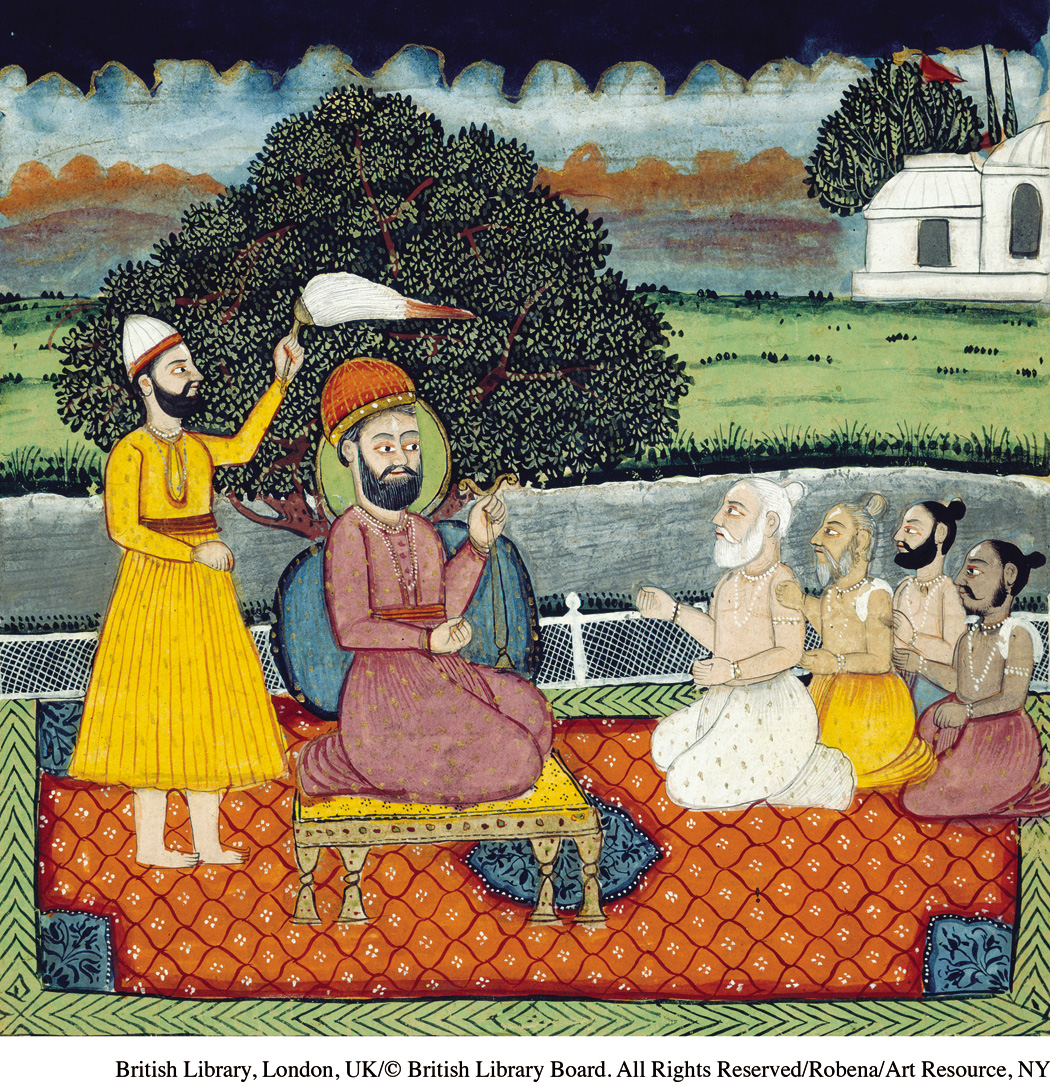India: Bridging the Hindu/Muslim Divide
In a largely Hindu India, ruled by the Muslim Mughal Empire, several significant cultural departures took shape in the early modern era that brought Hindus and Muslims together in new forms of religious expression. At the level of elite culture, the Mughal ruler Akbar formulated a state cult that combined elements of Islam, Hinduism, and Zoroastrianism (see “Muslims and Hindus in the Mughal Empire” in Chapter 13). The Mughal court also embraced Renaissance Christian art, and soon murals featuring Jesus, Mary, and Christian saints appeared on the walls of palaces, garden pavilions, and harems. The court also commissioned a prominent Sufi spiritual master to compose an illustrated book describing various Hindu yoga postures. Intended to bring this Hindu tradition into Islamic Sufi practice, the book, known as the Ocean of Life, portrayed some of the yogis in a Christ-

Within popular culture, the flourishing of a devotional form of Hinduism known as bhakti also bridged the gulf separating Hindu and Muslim. Through songs, prayers, dances, poetry, and rituals, devotees sought to achieve union with one or another of India’s many deities. Appealing especially to women, the bhakti movement provided an avenue for social criticism. Its practitioners often set aside caste distinctions and disregarded the detailed rituals of the Brahmin priests in favor of direct contact with the Divine. This emphasis had much in common with mystical Sufi forms of Islam and helped blur the distinction between these two traditions in India.
Among the most beloved of bhakti poets was Mirabai (1498–
What I paid was my social body, my town body, my family body, and all my inherited jewels. Mirabai says: The Dark One [Krishna] is my husband now.12
Yet another major cultural change that blended Islam and Hinduism emerged with the growth of Sikhism as a new and distinctive religious tradition in the Punjab region of northern India. Its founder, Guru Nanak (1469–
SUMMING UP SO FAR
In what ways did religious changes in Asia and the Middle East parallel those in Europe, and in what ways were they different?